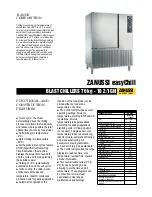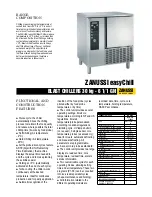
RLC-SVB05A-EN
7
The CH530 platform provides a highly modular approach for accommodating the
inputs and outputs to control a chiller. The CH530 platform includes discrete
devices for each input and output point on the system. For example, the EXV
includes the electronics to drive its motor contained within the motor housing.
The liquid level sensor includes the electronics necessary to read the float level.
Each temperature sensor includes the electronics to measure the thermistor
value.
The CH530 platform is very generic to varies chiller sizes or model applications. A
four compressor design does not require a different module design than a two
compressor design, nor did the two compressor design take on un-used
components.
An additional benefit to the LLID (low level intelligent device) approach is that
parts stocking is greatly simplified. LLIDs of each type are not dedicated to a
particular chiller design but can be applied individually across all sizes or models.
In the typical installation, there are two sets of devices. One set of devices is
installed in a control panel. This first set includes power supplies, devices that
require customer wiring, and the main processor. Devices in the second set are
installed at points of use around the unit and wired by stubs to a main trunk (IPC
bus).
The DynaView or EzView provides the user interface and the system main
processor. The main processor is the master of the chiller by collecting data,
status, and diagnostic information and communicating commands to the other
modules (starter, purge) and the LLID bus. The main processor also serves as the
bus manager. Functions of the bus manager include timing out communication
failures and recovering from errors on the IPC network.
Out of the box, all EzViews, and DynaViews are generic in that no software
(application code or chiller configuration) is installed until programmed by
TechView. In the same way that LLIDs are generic until applied, so is the main
processor. A service parts desk or technician can stock a main processor and give
it an identity at the point in time it is applied to a chiller.
There is additional information that each device must be “bound” with that is
dependent on its application. This additional data is called “binding information”
and is written to each device either by the factory tester or the TechView Service
Tool.
LLIDs must communicate with the main processor in order to be identified,
recognized, and differentiated from a neighboring device, a service LED and
switch are located on each LLID is used to identify a specific device. On CH530 a
temperature sensor is bound by being assigned a node number. The binding
IPC Overview and Troubleshooting








































